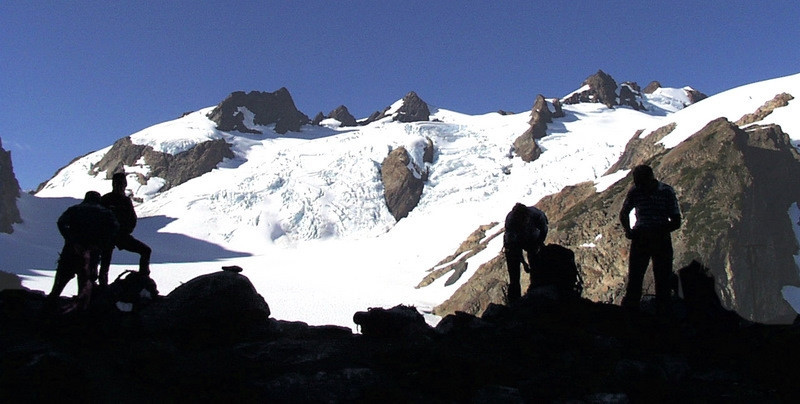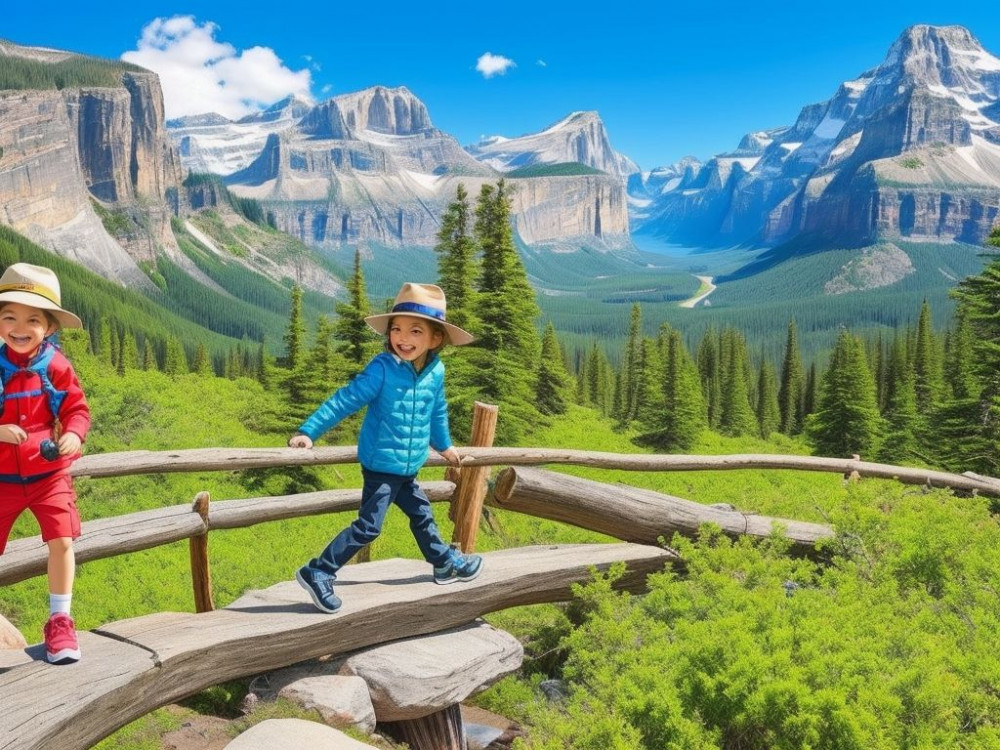Ready for an outdoor adventure? Come to Olympic National Park!
It’s one of the U.S.’s most captivating parks. Here, you’ll find majestic mountains, clear rivers, and lush forests.
Experience the wild beauty of nature with us! Unlock the magic of this unforgettable place.
Introduction
Olympic National Park awaits, tucked away in Washington state. Explore its diverse ecosystems and be amazed by its landscapes.
From temperate rainforests to towering mountains and coastal areas, this renowned park is full of life and beauty.
Experience the wonder of the rainforest, with ancient trees and exciting wildlife.
Or, take on the challenge of the mountain ranges and hike to the peaks of the Olympic Mountains or serene Hurricane Ridge.
The park also offers stunning coastline along the Pacific Ocean. Take a stroll along the pristine sandy beaches or watch out for whales and sea otters!
Olympic National Park has stories to tell, dating back thousands of years.
Native American tribes have given this land its cultural landscape, and explorers and settlers have left their own mark through expeditions and discoveries.
Location and History
Nestled in Washington, Olympic National Park is a wonder. Spanning 922,650 acres, it has a long history.
This park has diverse landscapes. From mountain ranges – like Mount Olympus – to alpine lakes and rainforests. The Hoh Rainforest gets 140-170 inches of rain a year.
Olympic National Park has 3 ecosystems. A rugged coast with driftwood shores, snow-capped peaks, and wildlife-filled valleys. Plus over 70 miles of coastline, full of tide pools and sea stacks.
What really sets this park apart is its cultural significance.
Home to Native American tribes for centuries, their heritage adds to this natural marvel.
Geography
Olympic National Park dazzles with its captivating geography. Covering over 922,651 acres, the park has many different ecosystems. From rugged mountain peaks to lush rainforests and pristine coastlines.
Let me tell you some awesome details about the park’s geography:
- The Olympic Mountains are a majestic sight, with Mount Olympus standing at 7,980 feet. The mountains are home to over 60 glaciers, providing fabulous views and mountaineering opportunities.
- The Hoh Rainforest is one of the park’s icons. It receives up to 170 inches of rain every year! This lush environment is home to tall ancient trees like Sitka spruce and western hemlock.
- The coastal region of Olympic National Park stretches for 73 miles. It offers stunning sights of cliffs, sandy beaches, and beautiful sea stacks. People can explore tide pools full of marine life, or go on kayak trips. There they can see sea otters and whales!
Now, let me tell you a captivating story related to Olympic National Park’s geography.
A group of hikers went on an amazing journey through the park’s wilds. They walked through forests full of mossy trees. They crossed crystal-clear rivers that flowed from the mountains. Along the way, they spotted diverse wildlife. From shy mountain goats on rocky ledges to playful river otters in the water. Each encounter reminded them how special this untouched ecosystem is. At night, they camped by Lake Crescent under the stars. They felt totally connected to nature in all its beauty.
When it comes to the climate in Olympic National Park, expect rainbows, snowflakes, and the occasional perplexed hiker in flip-flops!
Climate
Olympic National Park’s climate is known for its diverse weather and special micro climates. It experiences mild temperatures, lots of rain, and fog all year.
The coastal parts have a maritime climate with cool summers and mild winters. The Pacific Ocean moderates the temperatures, making a steady climate.

(Photo by NPS / Bill Baccuss)
The mountains, including the Olympic Mountains, have colder weather, plus snow in winter, which is great for snow sports.

(Photo by NPS / Danielle Archuleta)
The rainforests in the park have some of the most rain in North America. This leads to lush vegetation and exciting ecosystems.
Hurricane Ridge has strong winds due to its height. This makes exploring the trails and viewpoints more exciting.
Remember to pack layers when visiting Olympic National Park, as the weather changes quickly.
It’s a wild place with amazing trees and animals, and Nature is the best at playing the game.
Flora and Fauna
Olympic National Park is a nature-lovers paradise, full of diverse plants and animals.
It’s rich ecosystem shelters abundant flora and fauna, making it an ideal spot for biologists and wildlife enthusiasts.

(Photo by NPS / Jon Preston)
The park is home to many species, including:
- Flora: Douglas Fir, Western Hemlock, Sitka Spruce, Pacific Silver Fir, Western Redcedar
- Fauna: Roosevelt Elk, Black Bear, Mountain Lion, Marmot, Bald Eagle
Plus, some unique species, like the Olympic Marmot and the elusive Pacific Fisher, are only found in the park.

An interesting fact about the park is that President Theodore Roosevelt made it a national monument in 1909. And, two decades later, it was upgraded to a national park.
This was in part thanks to dedicated conservationists and advocates who wanted to protect its natural beauty.
Olympic National Park is full of captivating wildlife and awe-inspiring landscapes.
All who visit will be touched by its special charms.
Ecosystem
Olympic National Park is a diverse, thriving ecosystem! From lush rainforests to rocky beaches, this park has it all. The ecosystem is preserved and managed to protect its natural resources.
Here’s what makes it up:
- Rainforests = Dense forests with Sitka spruce and Douglas fir trees. Filled with ferns, lichens, and other plants.
- Mountains = Snow-capped peaks and alpine meadows. Home to mountain goats, elk, and marmots. Glaciers and crystal-clear lakes, too.
- Rivers = Stunning rivers with salmon and trout. Fishing and rafting are popular activities!
- Coastal Areas = Sandy beaches, tide pools, and sea stacks. Seals lounging on rocks. Whales migrating offshore.
Plus, 170 species of birds, including endangered species like marbled murrelets, bald eagles, spotted owls, and peregrine falcons.
Fun fact: Olympic National Park contains 3 different ecosystems: subalpine forest, temperate rainforest, and rugged coastline. All thanks to conservation! No Starbucks in sight!
Conservation
Conservation in Olympic National Park is all about protecting and preserving its various ecosystems, like old-growth forests, alpine meadows and untouched coastlines.
To make sure flora and fauna stay safe, there are scientific research projects, habitat restoration efforts and education programs.
Let’s take a look at some of the key conservation initiatives in the Park:
- Research Programs focus on biodiversity studies, with the aim of addressing ecological knowledge gaps.
- Habitat Restoration projects are about regenerating forests and improving habitat quality.
- Wildlife Management involves controlling species populations, preserving natural balances.
- Sustainable Tourism encourages environmental awareness and responsible visitor practices.
As well as that, measures have been taken to reduce human impact on delicate areas, like limiting access to certain areas during breeding seasons and abiding by Leave No Trace principles.
Olympic National Park has managed to sustain its unique ecosystems, while still offering visitors recreational activities.
This is proof of the importance of sustainable practices and cooperation between park management, wildlife agencies, researchers and community stakeholders.
Fun Fact: Did you know that Olympic National Park is home to one of the US’s longest wilderness coastlines? Stretching over 73 miles along the Pacific Ocean, it offers breathtaking views and diverse marine life to explore (Source: National Park Service). Get ready for exciting adventures in this spectacular Park!
Recreation
Olympic National Park offers a host of recreational activities for visitors to take part in.
From hikes and camping to fishing and wildlife-viewing, there are plenty of ways to explore the park’s natural beauty.
Hikers can traverse old-growth forests, pristine rivers, and towering mountain peaks.
Campers can spend the night to truly immerse themselves in the wilderness. Anglers can fish in one of the park’s many lakes and rivers.
Wildlife-viewers can search for bald eagles, elk, black bears, and more! Boaters can paddle the coast or sail Lake Crescent.
Plus, the park also offers educational programs to help visitors gain an understanding of its flora and fauna, and its conservation efforts.
For the best experience, it’s wise to plan ahead, pack appropriately, follow park regulations, and practice Leave No Trace principles.
With that in mind, visitors can have a safe and sustainable visit that preserves the park’s beauty for future generations.
So come to Olympic National Park to experience a wild adventure full of fun and danger!
Tourism
Olympic National Park, tucked away in the pristine wilderness of Washington state, is a paradise for nature lovers and thrill-seekers.
It boasts a range of ecosystems, from towering mountain peaks to lush rainforests.
Trails zigzag through ancient forests, leading to awe-inspiring waterfalls and vistas.
The park’s coastal areas offer sandy beaches and tide pools filled with marine life.
Camping under the stars or backpacking is an unforgettable experience.
Unique attractions await you in Olympic National Park.
Here you can find the Hoh Rainforest, one of the few temperate rainforests in the world.
You’ll feel like you’ve stepped into another world as you walk among mossy trees, hearing bird songs all around.
Then there’s Hurricane Ridge with its snow-capped mountains and alpine meadows. Wildlife enthusiasts can spot Roosevelt elk, bears, and bald eagles.
Visiting in spring or fall will help you avoid the crowds and truly experience the tranquility of nature.
Pack layers of clothing too, as weather can change quickly.
Don’t forget your camera! You won’t want to miss out on all the picture-perfect landscapes and wildlife.
Plus, ranger-led programs and guided tours are a great way to learn about the park’s ecology and history.
Make your trip to Olympic National Park one you’ll never forget.
With its stunning landscapes and abundant wildlife, it’s a true gem waiting to be explored.
So get ready to lace up those hiking boots and start an amazing journey!
And if you’re not planning to visit, you’d better start training for the Zombie Apocalypse.
Future
The future of Olympic National Park is looking bright!
Technology and innovation are moving fast, and let’s explore the exciting changes ahead.
Conservation efforts will be improved. New strategies will be implemented to protect and preserve the park’s delicate ecosystem.
To reduce the environmental impact, sustainable tourism practices will be encouraged. Research efforts will increase, deepening our understanding of the park.
Plus, measures will be taken to address climate change.
These efforts aim to protect the park’s rich biodiversity.
Sustainable tourism will promote balancing between preserving the park and allowing visitors to experience its beauty.
Research will help make informed decisions for protecting it for future generations.
FAQ
Where is Olympic National Park located?
Olympic National Park is located in the state of Washington, on the Olympic Peninsula in the Pacific Northwest region of the United States.
What are the main attractions in Olympic National Park?
Some of the main attractions in Olympic National Park include the Hoh Rain Forest, Hurricane Ridge, Lake Crescent, and the Olympic Mountains.
Can I go camping in Olympic National Park?
Yes, camping is available in Olympic National Park. There are multiple campgrounds and backcountry camping options for visitors.
Are there any hiking trails in Olympic National Park?
Yes, Olympic National Park offers a variety of hiking trails for all levels of hikers. Some popular trails include Hurricane Hill, Sol Duc Falls, and the Spruce Nature Trail.
What wildlife can I expect to see in Olympic National Park?
Visitors to Olympic National Park may encounter wildlife such as Roosevelt elk, black bears, mountain goats, and various bird species.
Are dogs allowed in Olympic National Park?
While dogs are allowed in certain areas of Olympic National Park, they are not permitted on most trails or in the backcountry. It is important to check the park’s regulations regarding pets before planning a visit.




Leave a Reply